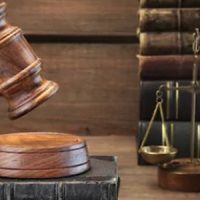Counter Arguments Are Possible for Almost Every Piece of Evidence

When you enter a plea of not guilty, you are claiming that you did not commit the crime of which you are being accused. Your next step is to find ways to persuade the jury that there is reasonable doubt about your guilt; remember that, if the jury is not sure whether you committed the crime, they must acquit you of the charges. In most cases, the best strategy is not to take the stand and insist that you have been framed and that the state or the alleged victim is out to get you for reasons that are no fault of your own. Rather, you should calmly examine the evidence that the prosecution intends to present to the jury and think of reasons why the evidence does not prove what the prosecution says it proves. Before your case gets to trial, you will have the chance to review all of the evidence that the prosecution will show during the trial. Here, our Miami criminal defense lawyer explains how you can refute some common types of evidence that prosecutors might present during your trial, which is more effective at establishing reasonable doubt than simply trying to refute the charges in an all or nothing way.
The Trouble With Eyewitness Testimony
Prosecutors might think that they have a slam dunk when a witness says, “I saw him break into the car and remove items from it,” or especially when a witness says, “He’s the one who robbed me at knifepoint.” The witnesses may sound very sure of what they are saying, and their testimony may sound convincing in the context of the arguments the prosecution has been presenting, but eyewitness testimony is not as reliable as a lot of people think it is. You might have heard of the experiment where students are asked to report on an incident or video that they saw in class, and they all remember the details differently.
The mind is designed to memorize outlines and to fill in the details upon being asked to recall the memory. Where do these filled in details come from? Sometimes they come from cues the witness receives in the moment, in other words, from suggestions that prosecutors subtly make to them on the witness stand. Other times, they come from patterns that make sense to the witness, in other words, from the witness’s own biases. One instance in which suggestibility and biases are at play in forensic science is when a witness is asked to identify a suspect out of a lineup. Witnesses often identify a person in the lineup as the perpetrator when none of the people in the lineup are the actual defendant.
Photographs Do Not Always Show What the Prosecution Says They Show
Photographs and surveillance camera footage are also not as reasonable doubt-proof as they seem. Yes, the exhibit is a photograph, but is it a photograph of what the prosecution says it is? How many photographs of Bigfoot have you seen on magazine covers and on the Internet? None of these photographs prove that Bigfoot exists. There simply isn’t enough corroborating evidence.
Cell phone pictures and videos and surveillance camera footage are time stamped, so they say when and where, but they do not say why. They can show that you went to the supermarket or the gas station, but these images by themselves do not prove that you committed a crime shortly before or after the images were taken.
Crime Labs Make Mistakes, Too
Prosecutors may present evidence showing that a substance confiscated from your house or car contained a certain controlled substance. They might also present evidence that your DNA was found on the clothing or car of someone against whom you are accused of committing a violent crime or sex crime. Forensics labs are notorious for mixing up drug samples and DNA samples. Even if the DNA collected from the alleged victim’s possessions does match yours, it only means that you were in contact with the alleged victim at some time, not that you assaulted the alleged victim or engaged in illegal sexual contact with him or her. We are constantly shedding skin cells, and these adhere to almost everything we touch. Therefore, there are trace amounts of your DNA almost everywhere you have been, and crime labs can pick up on this.
Contact Our Criminal Defense Attorneys
A South Florida criminal defense lawyer can help you establish reasonable doubt if your case goes to trial. Contact Ratzan & Faccidomo in Miami, Florida for a free, confidential consultation about your case.
Source:
nobaproject.com/modules/eyewitness-testimony-and-memory-biases
